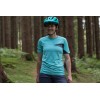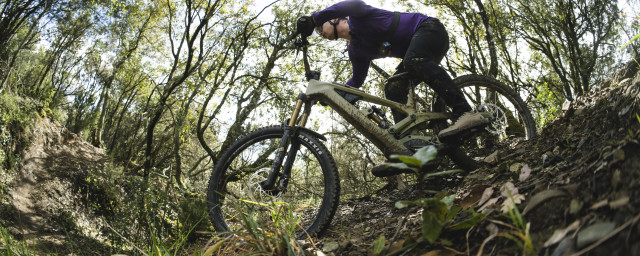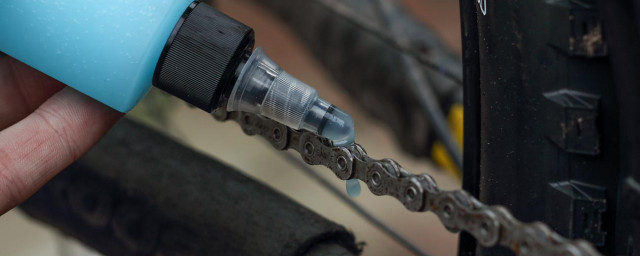Buyer's Guide to Winter Kit for mountain biking - best kit for the mud and rain

The clocks haven’t yet gone back but it’s still time to start thinking about your winter riding essentials. Being fully prepared for all the elements can throw at you will make riding in the slop much more enjoyable. With a whole host of good technical gear on offer there are few reasons not to embrace the weather and get out and slide, erm we mean ride.
- Buyer's Guide - Essential mountain biking kit
- Five ways to survive winter riding if you hate mud
- 13 ways to attach gear to your bike
[updated 2nd November 2020]
Here’s our guide to the pieces of kit we think you’ll need this winter, plus we've lined up some review links for you and links to all our buyers's guides below each section so you can find and buy the best pieces of kit we've tested.
Jacket
It’s the first thing that comes to mind when the rain starts pattering down, whatever the activity. Generally, when looking at waterproof jackets you’ll want one that scores marks in all the right categories: breathability, waterproofness, toughness and durability whilst still being easy to move around in. Where breathability and waterproof ratings are concerned, the higher the better here with 15,000mm for waterproof rating and 10,000m2 for the breathability being high numbers. Let’s face it, if you are going hard in any jacket you are going to sweat whatever the breathability rating may be but every little really does help in this case.
Taped seams are another feature that is high on the list, keeping water out at the points where the fabric has been sewn together. Hand in hand with taped seams are waterproof zips, look for these on both the main zip and any pockets. Other features of the jacket can be down to personal preference, for example, things like air vent positions, whether there is a hood or not, collar height and adjustment types are all aspects of the garment that change from person to person and the type of riding. We like a hood that can be stored away neatly and a fleecy collar for a bit of extra comfort on long rides.
A jacket is probably the most expensive thing you’ll purchase clothing wise but paying a bit more will usually be money well spent. We’ve dabbled with cheaper jackets, thinking ‘I’m going to sweat in it anyway so why spend the money’ but it’s always an uncomfortable and cold experience. Pricier jackets are more breathable, stay waterproof for longer and generally have a fit and a cut that keeps your covered whilst moving around on the bike. These are all things that will help regulate your temperature inside the jacket making sure when the conditions aren’t playing ball, you keep one of the important parts of your body (your torso) warm.
Reviews:
- Gore C5 Gore-Tex Shakedry 1985 Viz jacket
- Madison DTE Women's Waterproof Jacket Review
- Endura Women’s MT500 Waterproof Jacket II
- Alpkit Gravitas Jacket
Leg wear
Mountain bike leg wear follows many of the same rules as a good jacket, must be breathable, waterproof, well fitting and hardwearing for the many muddy miles it will undoubtedly endure. Waterproof shorts are a must for any hardened winter rider, not only will they protect you from the rain, they will also fend off spray from the trails at the time it’s not falling from the sky. They also prevent the ingress of dirt and grit into your lycra, keeping sensitive areas as comfortable as possible.
There are two options available, shorts or trousers, most brands will rep a pair of waterproof shorts with taped seams, waterproof zippers and of a decent length to keeps things as dry as a pair of shorts can. We rarely get too hot and sweaty in shorts due to the leg holes doubling as a large air vent so we put less weight on breathability rating here, as with jackets though, the higher the better where waterproof ratings are concerned when paired with good breathability ratings.
Not all brands will offer a pair of waterproof trousers but there are a few pairs out there. We’ve got a pair from Madison on test at the moment and have found them to be pretty easy to pedal in and they keep you clean underneath too. Shorts are a ‘go to’ item for wet winter trails and trousers have a place when it is absolutely torrential or staying warm is the name of the game.
Another option for staying warm is an insulated pair of shorts, these are thicker than regular shorts, often have a fleece lining or similar and can be treated with a DWR (durable water resistant) coating to deal with trail spray, an example is these softshell shorts from Madison. These are great when it is cold and dry and your number one priority is keeping the wind chill off and the upper leg muscles warm.
Reviews
- Madison Zenith Waterproof Shorts
- Cube Blackline Rain Shorts
- Madison DTE Women's waterproof shorts
- Scott Trail MTB Dryo 50 waterproof shorts
Base layer
Base layers are designed to wick sweat and moisture away from the skin keeping the wearer warm and dry. They also trap a layer of air next to the skin adding to the warmth. They come in a range of materials either synthetic ones, such as a polyester blend, or natural wool, for example, merino. Base layers are usually quite close fitting in order to whisk sweat away and hold that warm air where it is needed but they will be available in a range of sleeve lengths.
We usually have a vest, a short sleeved and long sleeved option in our wardrobe ready for whatever temperature conditions we find ourselves riding in. A vest is great under a long or short sleeved jersey to keep just the torso warm whereas the others can be worn under any outer layer depending on conditions. If the purchase of just one base layer is on the cards, then go for a merino long sleeved variety, for a great functioning, soft against the skin and adaptable piece of kit.
- What's best for cycling, synthetic or merino base layers?
- 10 pieces of essential mountain bike clothing for beginners
Reviews
Socks
There are two prominent choices here; waterproof as from the likes of Sealskinz and Gore or a simple merino sock. The former is a waterproof unit designed to keep the rain out the latter is a regular sock with properties in the material to keep your feet warm, they’ll be wet but as long as you are moving, you’ll be warm. Merino socks are a great option if you don’t want the added bulk a waterproof sock brings, you can wear them all year round, they are easier to wash and dry and you might find keep your feet warmer than waterproof alternatives.
Reviews
Lycra
Thicker and longer lycra is a real godsend for winter riding, we opt for lycra bib knickers when the weather turns sour. Knickers are a three quarter length pair of lycra shorts extending to mid-calf, you can find these with a fleece lining to really ramp the warmth up. Bibs are a great option for winter to keep the dirt and muck out, they help prevent grit going down the back of your shorts whilst staying in place well even when soaking wet. If you don’t want to stretch to brand new lycra for winter, check out cycling knee warmers. These might be more commonly seen on our roadie friends but can be a good way to keep the joints warm, you will also be able to find matching arm warmers too.
Reviews
- Gore C5 Opti Bib Shorts+ review
- Assos XC bib shorts review
- Morvelo Covert Stormshield Bib Shorts review
- Aussie Grit Apparel Flint Women's Bike Shorts Review
- PEdAL ED Tsuki Women's bib shorts review
Shoes
Winter shoes can come in styles that are fully waterproof or are thickly lined and super toastie. They are an expensive purchase though, we are going to be testing this pair of Defroster Trail Mountain Bike Shoes from Specialized in the near future and at close to £200 we hope our tester’s feet will stay bone dry! If winter shoes are too much of a stretch for a few months riding (and who can blame you) then waterproof overshoes are the way to go such as these from Sealskinz.
We recently brought you news of Endura’s new MT500 waterproof booties, a neoprene overshoe like this will keep your feet pretty dry, super warm (they're a windstopper too) and will also protect your shoes making them last a whole lot longer. With the option now to buy specific overshoes for flat pedals or SPD’s they are a no-brainer. They do look a little odd but this is definitely a case of function over fashion and you’ll be glad you weren’t a slave to the catwalk gods.
- Best clipless gravel shoes you can buy - tried and tested for winter and summer riding
- Best trail or enduro mountain bike SPD and clipless shoes you can buy - tried and tested
Reviews
- 45NRTH Japanther boots review
- Shimano MW7 Gore-Tex SPD shoes
- Fizik Artica X5 SPD waterproof mountain bike shoe
Gloves
There are other options though and winter gloves that are windproof are a good middle ground. These will protect your hands, which are often very still for extended periods, from the cold wind whilst limiting bulkiness. Look for ones that don’t have too much padding on the palm of the hand to reduce bulk even further. Our top tip is to buy two pairs and keep one in your pack for emergencies – a fresh pair of gloves on a wet ride is like like sliding into freshly washed bedsheets and we all know how lovely that is!
Reviews
- Giro Inferna women's gloves
- Gore M Gore Windstopper gloves review
- Showers Pass Crosspoint Waterproof Knit Gloves
- Madison Zena Women's Gloves
- 100% Brisker Cold Weather gloves review
Clear glasses
Regardless of your mudguard choices, there will inevitably be a bit of muck that makes its way to face level and into your eyes, whether that be from your own tyres or somebody else's. A good pair of glasses with clear lenses will protect you from this spray (and discomfort) whilst allowing you to see as normal in dark and light conditions alike. It’s important to get the fit right here ensure they are neither too wide or too narrow for reasons of comfort and security. A well-fitting pair of glasses will also prevent them from steaming up somewhat. Fogging up is always a nuisance but some manufacturers offer an antifog coating which will go some way to alleviating the problem, forward movement is usually key though.
Wrap around glasses offer the best protection with rimless designs making the most of your peripheral vision too. You can buy glasses with interchangeable lenses which will allow you to swap between a clear, a light enhancing or a sunglasses lens – a good choice, making expensive glasses a year-round piece of kit rather than a winter specific one.It’s also a good idea to check that they fit well with your chosen helmet, for example we’ve found that some lids are cut low at the temple which is great for protection but on smaller faced rides means the glasses arm rattles annoyingly against the helmet.
Reviews
- Ride 100% Speedcraft SL glasses review
- Julbo Renegade Zebra Light glasses review
- Smith Optics Ladies PivLock Asana Chromapop Glasses
- Smith Optics Wildcat glasses review
- Tifosi Optics Brixen interchangeable lens glasses review
- Endura Guppy Glasses
- Adidas Evil Eye Evo Pro Glasses
Pack
If you’ve received info from mother nature and have agreed on the weather forecast for the duration of your ride then you can safely ride without a pack. We’ll hazard a guess that that is not the case though and you won’t be able to categorically say you’ll not need that jacket or spare base layer in the winter. A pack is pretty useful to hold those extra spares, layers and food that although probably won’t be needed nine times out of ten. On that tenth time though when you are stood on a freezing hillside waiting for your mate to fix some intricate part of their bike with icicles for fingers you’ll be glad of whatever goodies you’ve stuffed into your pack, be it a buff, a woolly hat, spare gloves or even an extra big peanut butter sandwich……..mmmmm.
Whilst some bags come with a waterproof cover, which are great during drizzle or for deflecting trail spray, they don’t, however, tend to fare too well when the heavens really open. For everything that really, really needs to stay dry, such as your spare clothing, 1K phones and those nutty butty sarnies, you’re best off sticking it in a ‘dry bag’ or waterproof sack in the main compartment of the bag. There are plenty of sizes available from 1L upwards.
Reviews
- Polaris Bikewear Aquanought waterproof hydration pack review
- Thule Vital 8L hydration pack review
- Osprey Raven 10 hydration pack (2019) review
- CamelBak Solstice LR 10 women's hydration pack review
- Camelbak Chase bike vest review
Hidden extra’s
A Buff - A product that has taken it's commonly known name from the company that designed it, a buff is a seamless tube of stretchy material and is a jack of all trades - neck warmer, hat, ear warmer, sweatband, bandage in a crisis - neat and small, it'll take up next to no room in your pack and will provide much pleasure when preventing chills down your collar. Our one hails from the Tweedlove bike festival in Scotland, proving freebies can be useful after all.
Cash - Lastly we recommend you always carry enough cash for a coffee, there is nothing like warming through with a healthy dose of caffeine post (or mid) ride. Take enough for your mate too, they'll be forever in your debt!
You might also like:
- The best ways to find new MTB trails
- Buyers guide to knee pads - all you need to know to protect your pins
- Top tips for mountain biking downhill in the mud – how to ride in muddy conditions





















